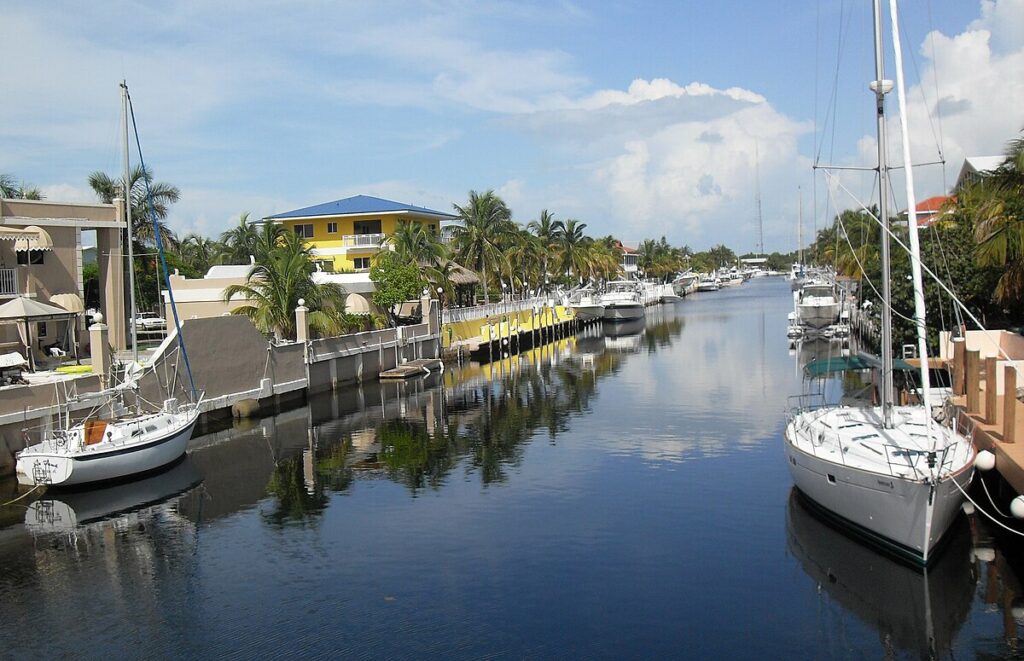
Moving to Key Largo, Florida: A Comprehensive Relocation Guide
Considering moving to Key Largo, Florida? This tropical paradise offers world-class diving, coral reefs, and laid-back island lifestyle. As the first and largest island in the Florida Keys with approximately 11,000 residents in 2025, Key Largo combines natural beauty with convenient access to Miami and the Keys experience.
Demographic Profile to Consider If Moving to Key Largo:
Key Largo’s 2025 population is approximately 11,000 residents in this unincorporated community spanning the northern Florida Keys in Monroe County. The median age is around 54 years, with retirees, dive industry professionals, artists, and nature enthusiasts. The population is approximately 82% White, 15% Hispanic. Key Largo stretches over 30 miles along the Overseas Highway (U.S. 1), with properties ranging from canal homes with boat docks to oceanfront estates to modest mobile home parks. The community is known as the “Diving Capital of the World” due to John Pennekamp Coral Reef State Park and surrounding reefs. Key Largo attracts those seeking tropical living, water-based lifestyle, and escape from mainland hustle. The island atmosphere creates a unique, relaxed character distinct from mainland Florida. Find trusted local services for moving, living, and working in Key Largo.Key Largo Relocation Directory
Cost of Living to Consider If Moving to Key Largo:
Key Largo represents premium pricing for the Florida Keys. Median home values range from $600,000 to $900,000 in 2025, with waterfront and ocean-access properties commanding significantly more. The median household income is approximately $70,000, though many residents are retirees with assets or business owners. Rental properties average $2,500 to $4,000 monthly, with limited availability affecting pricing. Florida’s lack of state income tax benefits residents, though property insurance costs are substantial in the Keys. Overall cost of living is high, reflecting limited land availability, island location, and tourism economy. Groceries and goods cost more due to transportation. Key Largo attracts those prioritizing tropical lifestyle and water access over affordability, with housing costs creating exclusivity.
Economy and Job Market:
Key Largo’s economy centers on tourism, diving industry, fishing, and marine services. Dive shops, charter boats, fishing guides, and marinas provide significant employment. Restaurants, hotels, and tourist attractions support hospitality workers. Many residents are business owners in tourism-related fields. Some work in real estate, property management, or construction. The John Pennekamp Coral Reef State Park employs rangers and staff. Retail along U.S. 1 creates service jobs. Many residents are retirees, artists, or remote workers. The seasonal tourism creates employment fluctuations. Some commute to Miami or Homestead for work, though long commute times make this less common. The economy operates on a smaller scale than mainland metros, with lifestyle often prioritized over career advancement.
Education:
Monroe County School District serves Key Largo students with schools including Key Largo School (K-8) and Coral Shores High School. The small district operates schools throughout the Keys. Florida Keys Community College provides associate degrees and workforce training. The educational infrastructure serves the limited population, with some families choosing mainland schools or private options. The island lifestyle influences educational priorities, with many families embracing the unique Keys environment as part of education.
Recreation and Lifestyle:
Key Largo offers world-renowned diving and snorkeling in John Pennekamp Coral Reef State Park, the first underwater park in the United States. The Christ of the Abyss underwater statue attracts divers globally. Residents enjoy fishing from boats, bridges, and shore for sport fish including tarpon, bonefish, and sailfish. Kayaking through mangrove forests and backcountry waters provides nature exploration. The Florida Keys Wild Bird Rehabilitation Center cares for injured birds. Sunset celebrations, tiki bars, and waterfront dining create the island lifestyle. Boating is central to life, with many homes featuring boat docks. The community values environmental conservation and marine protection. Events include fishing tournaments and Keys culture celebrations. The tropical climate and water focus define daily life. The lifestyle emphasizes outdoor recreation, simplicity, and natural beauty over material pursuits.
Healthcare and Services:
Key Largo residents access healthcare through Mariners Hospital in nearby Tavernier providing emergency and medical services. Baptist Health South Florida operates facilities throughout the Keys. Major hospitals in Miami are accessible for specialized care, though drive times exceed 60 minutes. Limited medical services on the island require travel for comprehensive care. Emergency services operate throughout the Keys with helicopter transport available for critical cases.
Transportation:
Key Largo is accessed via the Overseas Highway (U.S. 1), the only road connecting the Florida Keys. Miami International Airport is approximately 60-75 minutes north depending on traffic. Keys Transit operates limited bus service along U.S. 1. Most residents rely on personal vehicles and boats. The linear development along the highway makes navigation straightforward but traffic can be challenging, especially during peak tourist season. Many residents use bicycles for local travel. Boat access to islands and backcountry is essential for many lifestyle activities.
Conclusion:
Moving to Key Largo in 2025 offers tropical island living with world-class diving, coral reefs, and laid-back lifestyle. The island’s combination of natural beauty, water-based recreation, and escape from mainland intensity makes it ideal for divers, boaters, and those seeking authentic Florida Keys experience with convenient access to the first Keys island.

